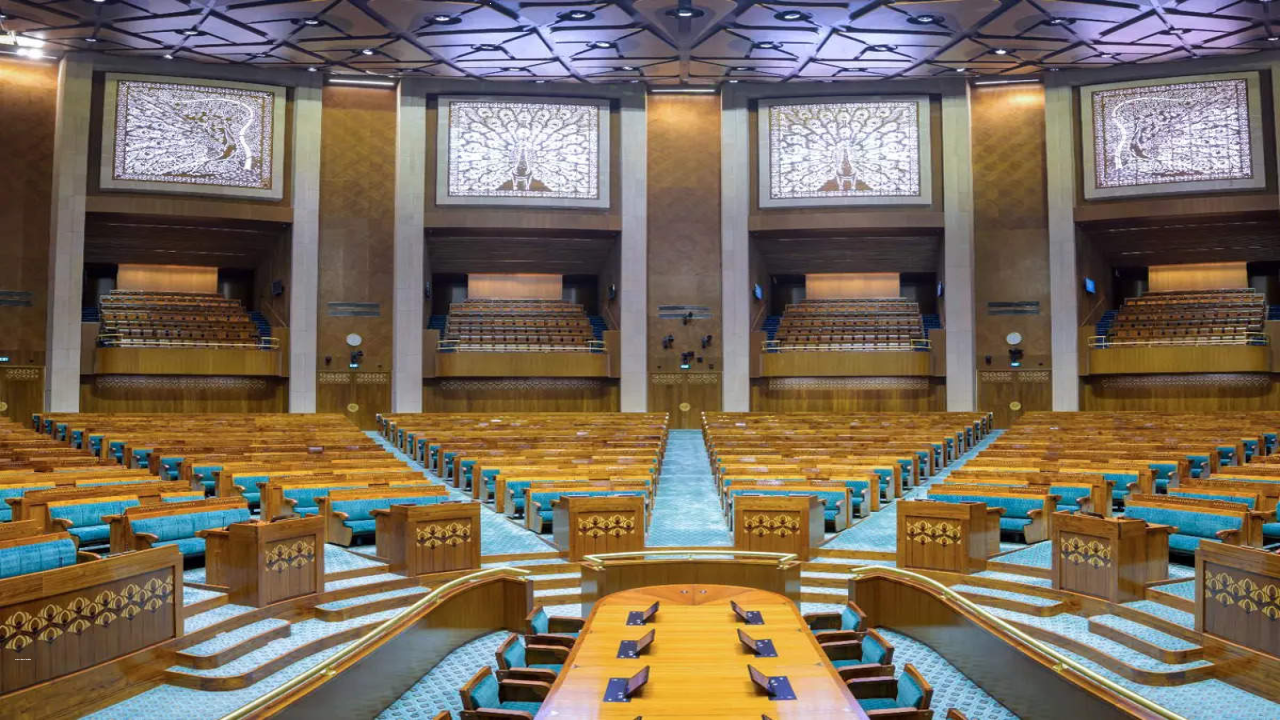New Parliament Building
The new Parliament building in India is an architectural marvel that represents the ethos of the nation. Inaugurated on May 28, it is adorned with intricate statues and motifs inspired by ancient sculptures, reflecting the rich cultural heritage of the country.
Inspired by Ancient Sculptures
At the six doors of the new Parliament building, statues inspired by ancient sculptures take center stage. These majestic figures hold deep historical and cultural importance, capturing the imagination of the nation. Each door showcases unique inspirations that evoke a sense of awe and admiration.
The Majestic Gaj Dwar
The Gaj Dwar, one of the entrances, features imposing stone elephants that pay homage to the statues at the 9th-century Madhukeshwara temple in Banavasi, Karnataka. These remarkable sculptures stand tall, symbolizing strength and grace.
The Graceful Ashwa Dwar
Adorning the Ashwa Dwar entrance are statues of horses, reminiscent of the sculptures at the Sun temple in Odisha from the 13th century. These elegant depictions embody the power and beauty associated with horses.
Inspired Dwars
The Shardula, Hamsa, and Makara dwars showcase statues inspired by renowned sculptures from different regions of India. The Gujri Mahal in Gwalior, the Vijay Vithala temple in Hampi, and the Hoysaleswara temple in Karnataka serve as the muse for these intricate creations. Each sculpture holds its own cultural significance and adds to the grandeur of the new Parliament building.
The Resplendent Garuda Dwar
The Garuda dwar, the final entrance, features statues of the mount (vahana) of Vishnu. These sculptures draw inspiration from an 18th-century CE Nayaka period sculpture of Tamil Nadu. The Garuda dwar exudes a sense of reverence and spirituality.
The Symbolism of Foucault’s Pendulum
Within the triangular roof of the Constitution Hall, the Foucault’s Pendulum gracefully hangs from a large skylight. This captivating installation symbolizes the rotation of the earth and represents the harmony between India and the universe. It serves as a reminder of the interconnectedness of our world.
The Lotus and Peacock Interiors
The interior design of the Rajya Sabha, the upper house, takes inspiration from India’s national flower, the lotus. This symbolic motif creates a serene and contemplative atmosphere within the chamber. On the other hand, the interior of the Lok Sabha, the lower house, draws inspiration from the peacock, India’s national bird. The vibrant colors and intricate patterns evoke a sense of pride and vitality.
Ceremonial Foyers and Cultural Icons
The new Parliament building boasts three ceremonial foyers that showcase impressive brass images. These magnificent pieces depict iconic figures such as Mahatma Gandhi, Chanakya, Gargi, Sardar Vallabhbhai Patel, B.R. Ambedkar, and the Chariot Wheel from the Sun Temple at Konark. They serve as a testament to the rich cultural heritage and the contributions of these esteemed individuals to the nation.
Month: Current Affairs - May, 2023
Category: India Nation & States Current Affairs


